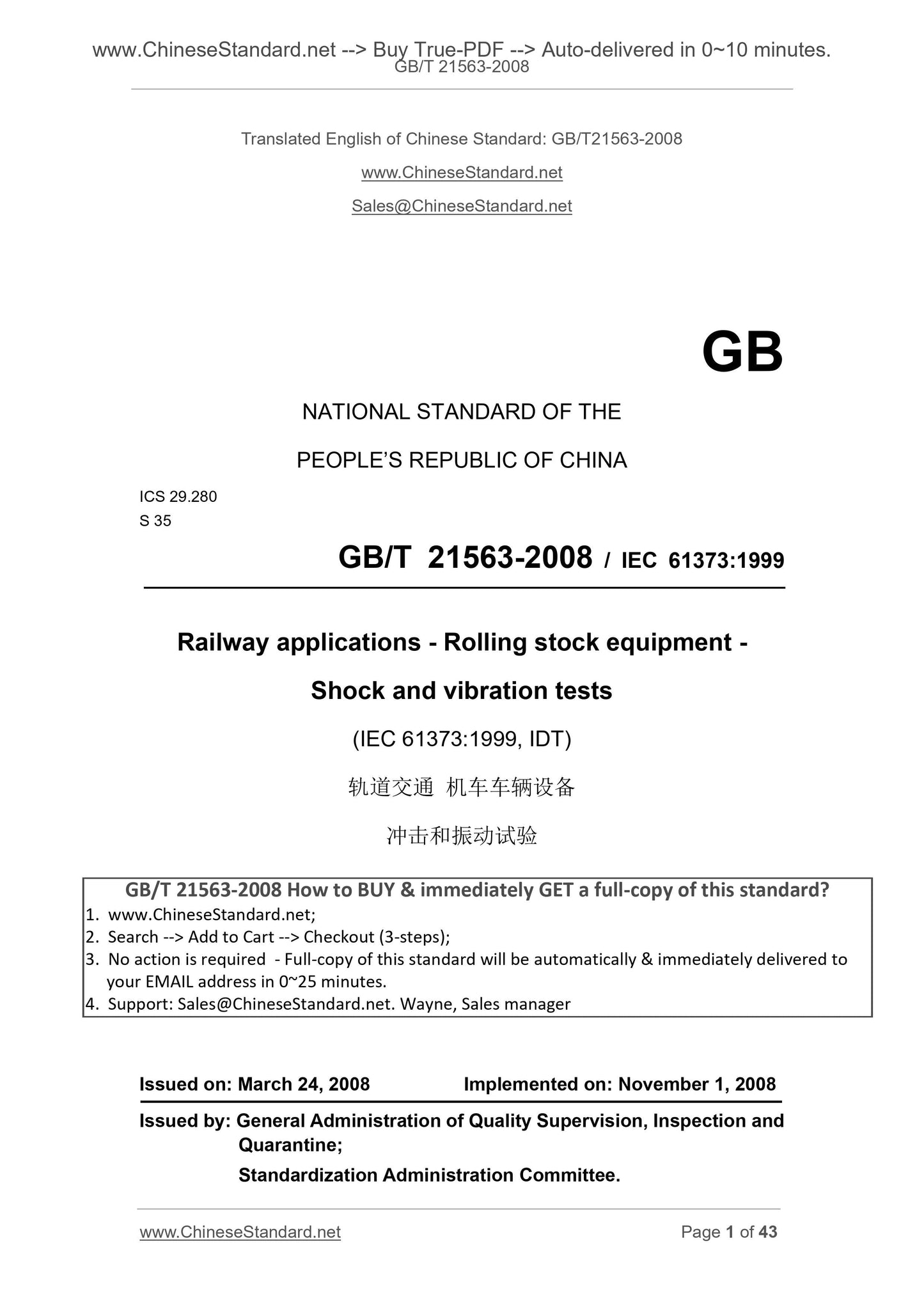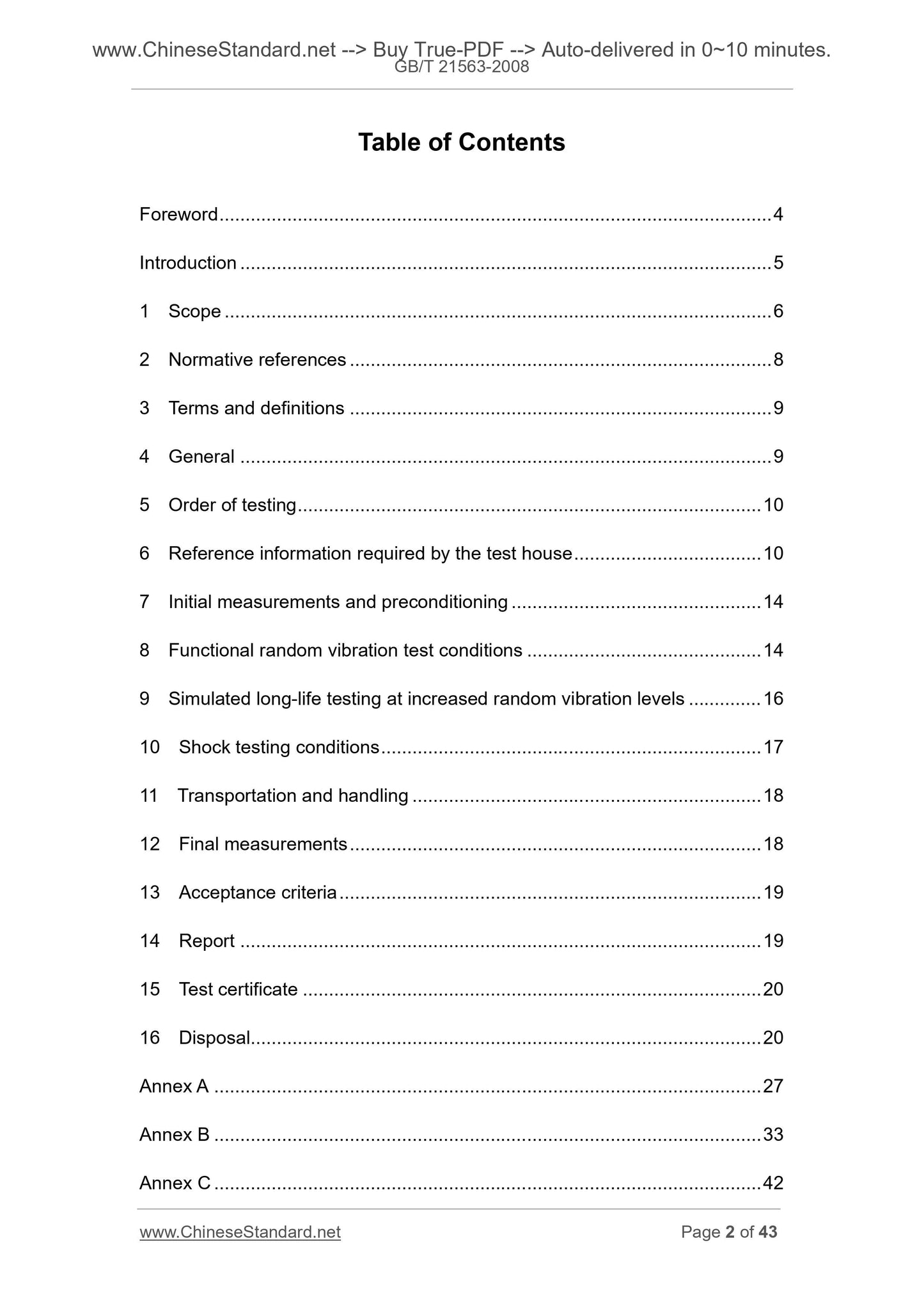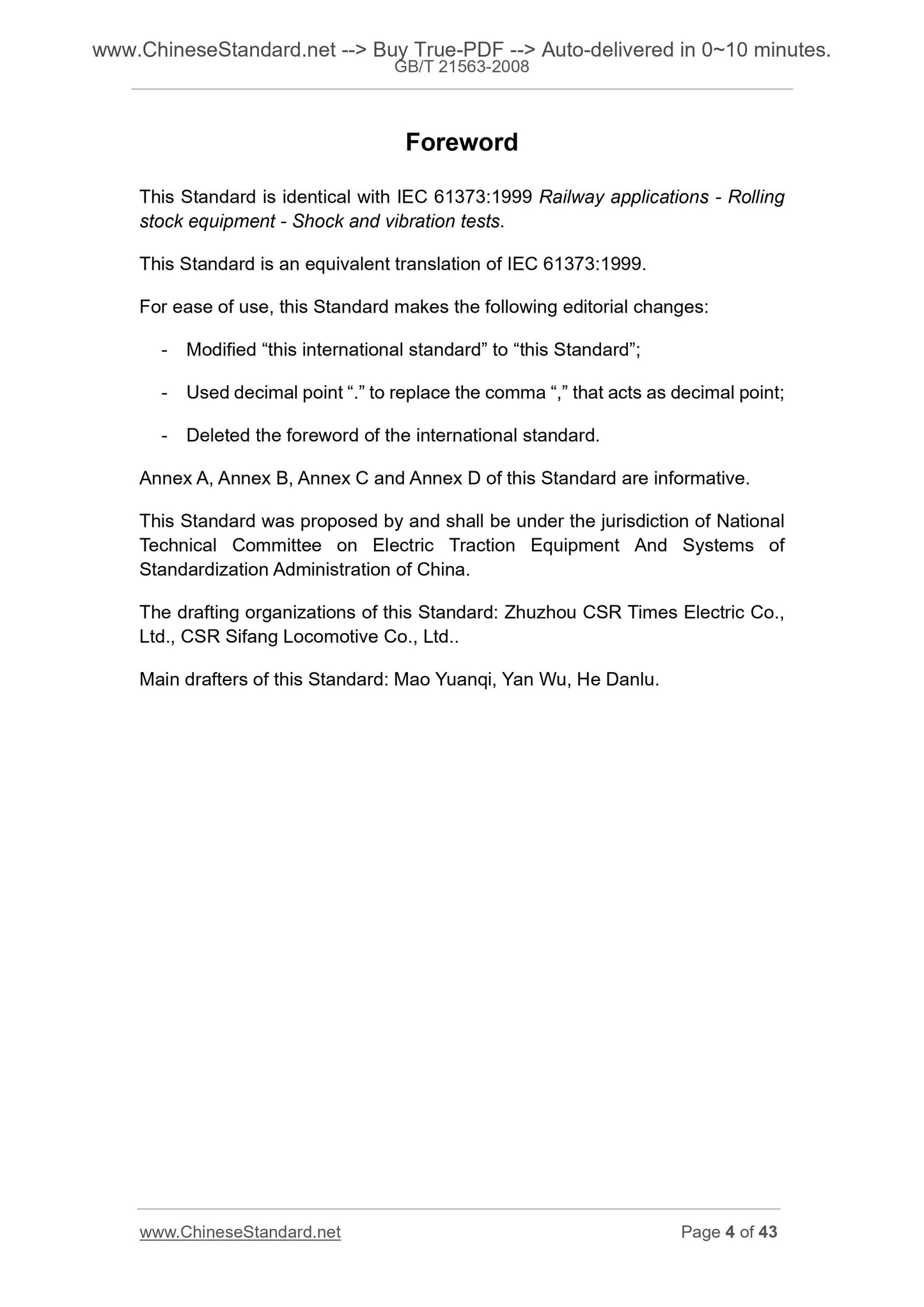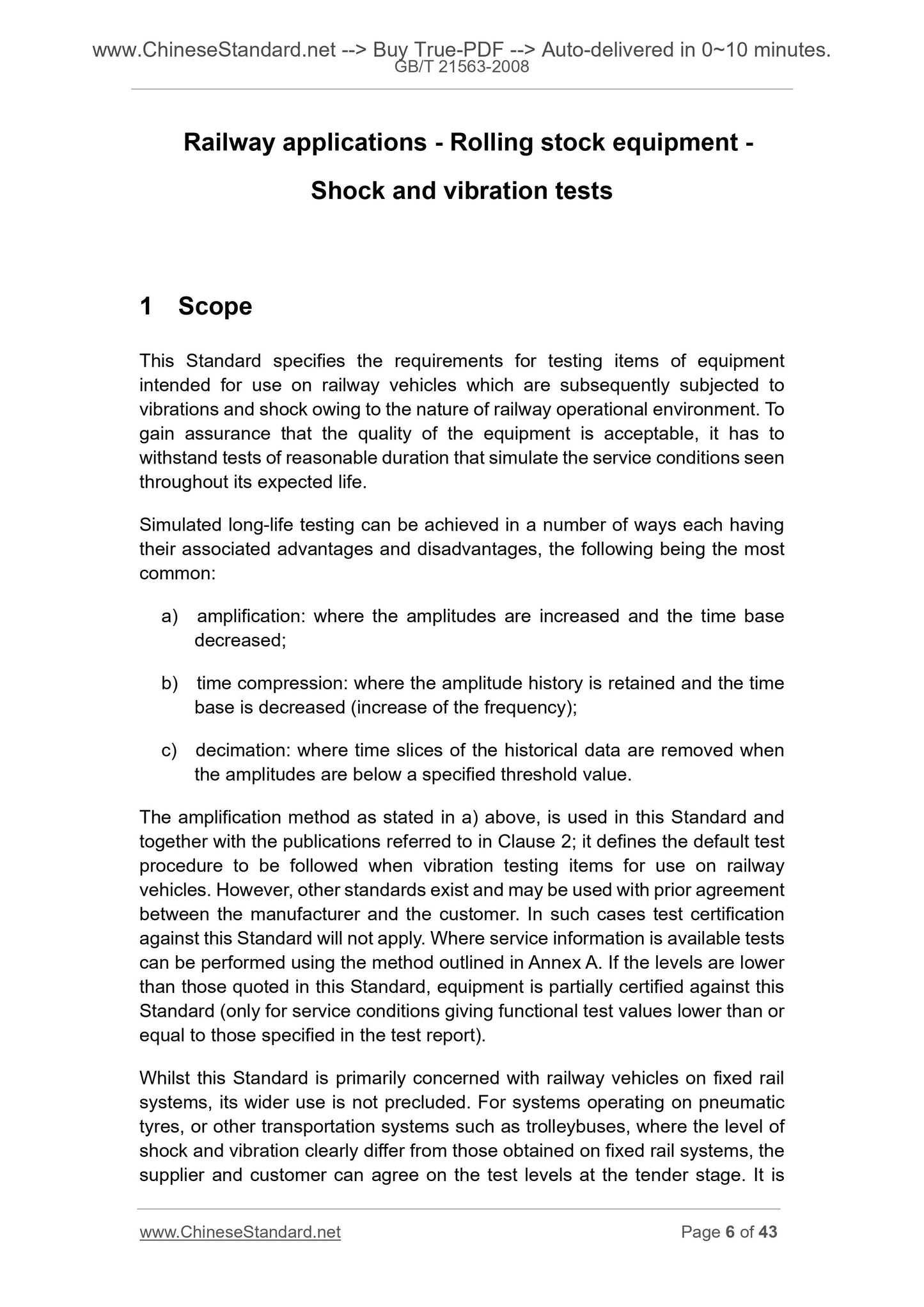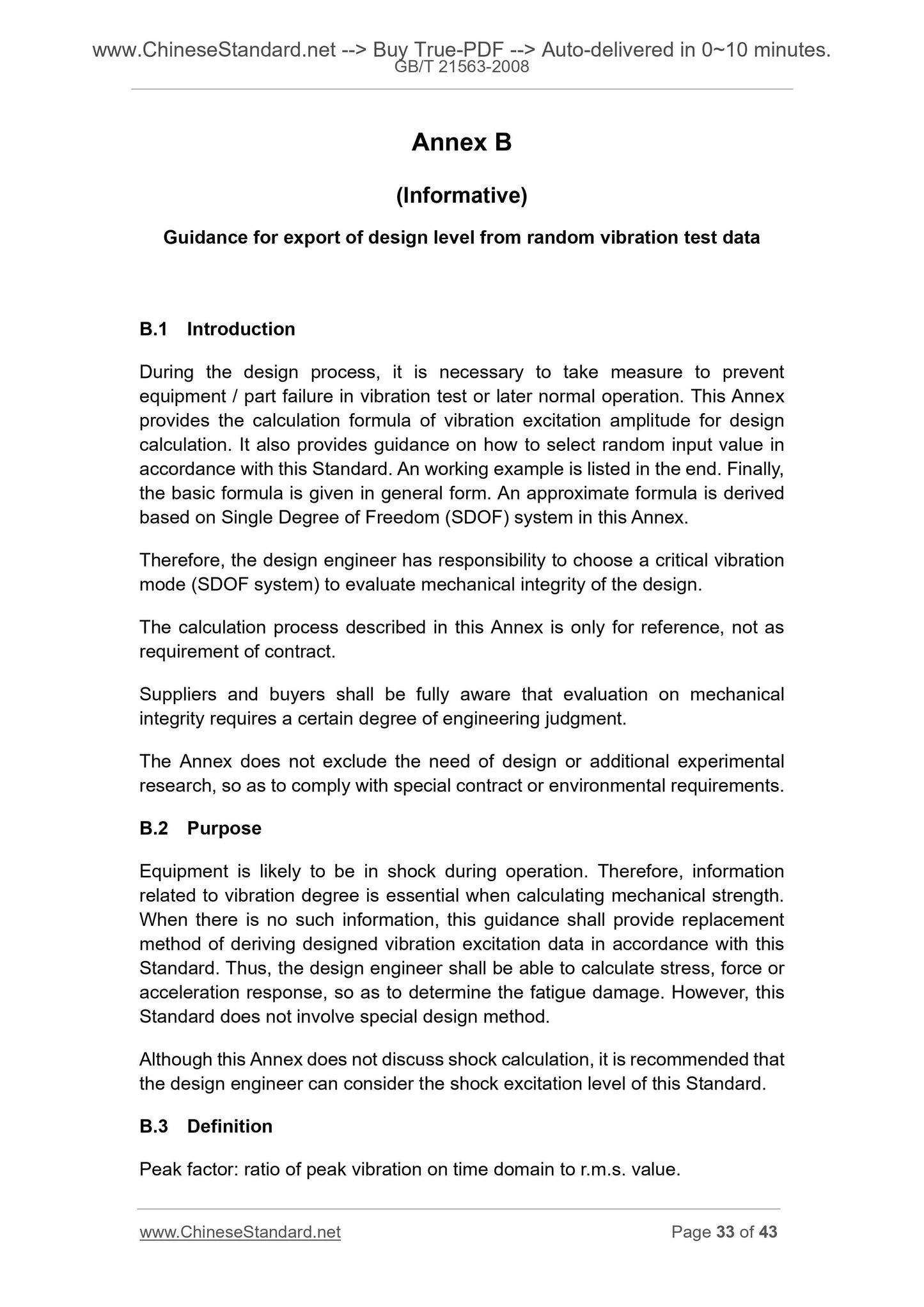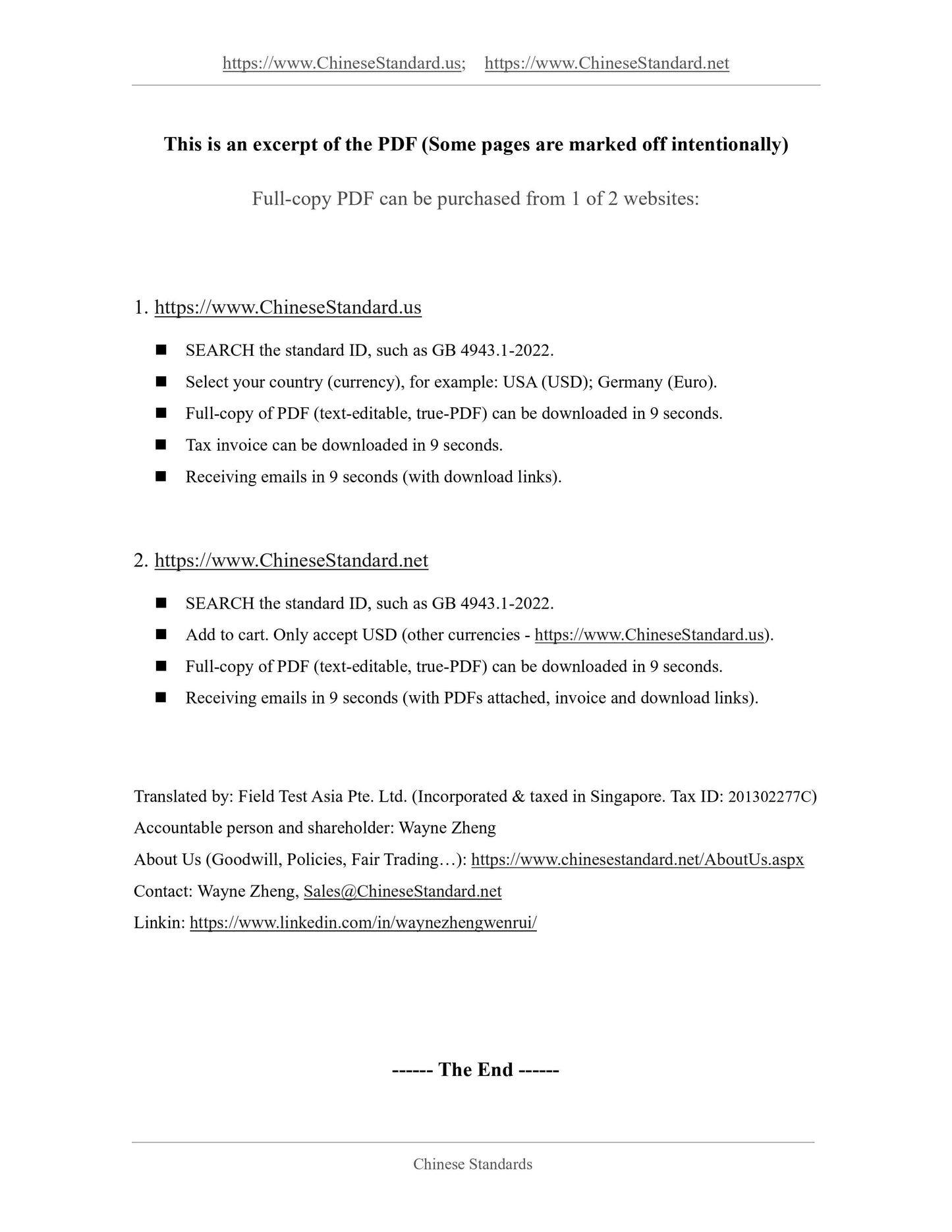1
/
of
6
www.ChineseStandard.us -- Field Test Asia Pte. Ltd.
GB/T 21563-2008 English PDF (GB/T21563-2008)
GB/T 21563-2008 English PDF (GB/T21563-2008)
Regular price
$125.00
Regular price
Sale price
$125.00
Unit price
/
per
Shipping calculated at checkout.
Couldn't load pickup availability
GB/T 21563-2008: Railway applications -- Rolling stock equipment -- Shock and vibration tests
Delivery: 9 seconds. Download (and Email) true-PDF + Invoice.Get Quotation: Click GB/T 21563-2008 (Self-service in 1-minute)
Newer / historical versions: GB/T 21563-2008
Preview True-PDF
Scope
This Standard specifies the requirements for testing items of equipmentintended for use on railway vehicles which are subsequently subjected to
vibrations and shock owing to the nature of railway operational environment. To
gain assurance that the quality of the equipment is acceptable, it has to
withstand tests of reasonable duration that simulate the service conditions seen
throughout its expected life.
Simulated long-life testing can be achieved in a number of ways each having
their associated advantages and disadvantages, the following being the most
common.
a) amplification. where the amplitudes are increased and the time base
decreased;
b) time compression. where the amplitude history is retained and the time
base is decreased (increase of the frequency);
c) decimation. where time slices of the historical data are removed when
the amplitudes are below a specified threshold value.
The amplification method as stated in a) above, is used in this Standard and
together with the publications referred to in Clause 2; it defines the default test
procedure to be followed when vibration testing items for use on railway
vehicles. However, other standards exist and may be used with prior agreement
between the manufacturer and the customer. In such cases test certification
against this Standard will not apply. Where service information is available tests
can be performed using the method outlined in Annex A. If the levels are lower
than those quoted in this Standard, equipment is partially certified against this
Standard (only for service conditions giving functional test values lower than or
equal to those specified in the test report).
Whilst this Standard is primarily concerned with railway vehicles on fixed rail
systems, its wider use is not precluded. For systems operating on pneumatic
tyres, or other transportation systems such as trolleybuses, where the level of
shock and vibration clearly differ from those obtained on fixed rail systems, the
supplier and customer can agree on the test levels at the tender stage. It is
Basic Data
| Standard ID | GB/T 21563-2008 (GB/T21563-2008) |
| Description (Translated English) | Railway applications -- Rolling stock equipment -- Shock and vibration tests |
| Sector / Industry | National Standard (Recommended) |
| Classification of Chinese Standard | S35 |
| Classification of International Standard | 29.280 |
| Word Count Estimation | 30,355 |
| Date of Issue | 2008-03-24 |
| Date of Implementation | 2008-11-01 |
| Quoted Standard | GB/T 2423.5-1995; GB/T 2423.43-1995; IEC 60068-2-64-1993 |
| Adopted Standard | IEC 61373-1999, IDT |
| Regulation (derived from) | National Standard Approval Announcement 2008 No.5 (Total No.118); Railway-Science (2010) 231 |
| Issuing agency(ies) | General Administration of Quality Supervision, Inspection and Quarantine of the People's Republic of China, Standardization Administration of the People's Republic of China |
| Summary | This standard specifies the device to be installed on the rail rolling stock for random vibration and shock test requirements. As the orbiting environmental impact, the car device will withstand vibration and shock. To ensure the quality of equipment, the use of analog devices should be tested for its environmental conditions over time. This standard is mainly used for the rolling stock on the fixed rail system, can also be used for other occasions. This standard applies to single- direction test. Multi-directional testing is beyond the scope of this standard. The criteria used to assess the equipment installed on the main structure of the rolling stock, does not apply to the composition of the primary structure of the device itself trials. |
Share
